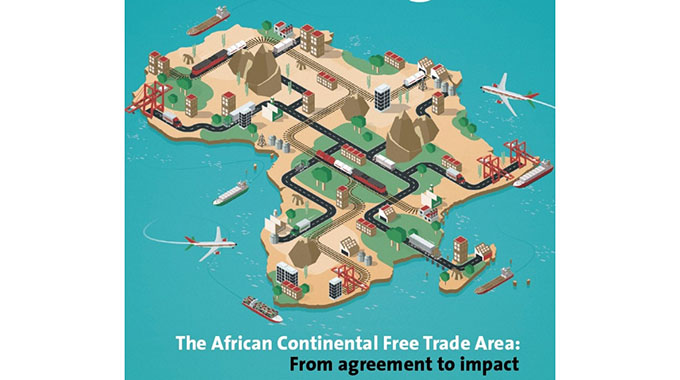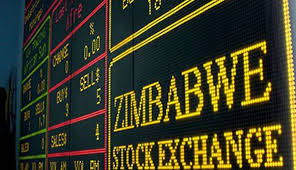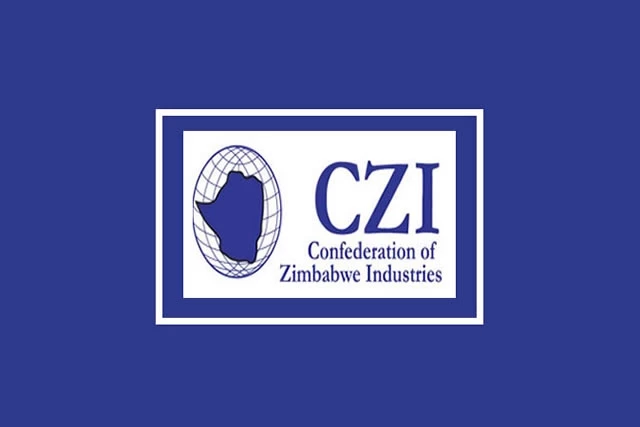PAYE tax can shore up ZiG demand — CZI
THE Confederation of Zimbabwe Industries (CZI), a powerful business lobby group for manufacturers, has called for the inclusion of pay-as-you-earn (PAYE) among statutory payment obligations that can be settled in Zimbabwe Gold (ZiG) to drive its demand and engender durable stability for the currency.
This comes as the domestic unit has depreciated extensively on the parallel market since its launch in April this year while the central bank devalued the official exchange rate by more than 42 percent last week to curtail mounting pricing distortions in the market.
Income tax, which is payable quarterly, and import duty on selected luxuries are presently the two largest tax obligations for which economic agents can settle in local currency, limiting the scope to create strong demand for the fledgling local currency.
CZI has warned though that the sustained free fall of the domestic unit, which has seen its precipitous fall on the black market in the last few weeks, could ignite a long-lasting inflationary trajectory if not quickly halted.
Prices in Zimbabwe track movements in the US dollar, amid a deficit of confidence in the domestic currency following the initial collapse of the Zimbabwe dollar, which wiped savings and the value of pensions for many people and institutions post the year 2008.
The volatility of the ZiG exchange rate had started to cause serious pricing distortions, as traders struggled to balance pricing in both foreign and local currency, without leaving loopholes for arbitrage by speculators.
The distortions were causing viability challenges for formal businesses, as the law only permits pricing based on the official exchange rate, which is significantly lower than the open market rate in a country in which prices in the wider economy are indexed to the US dollar exchange rate.
This prompted the central bank to devalue the ZiG from around ZiG14/US$1 to roughly ZiG25/US$1 last week, to close down some of the arbitrage holes created by the huge disparity between the official and parallel market exchange rates.
While businesses are required to price their goods and services based on the official exchange rate, businesses continue to face hurdles in accessing forex for key inputs on the interbank market and often have to find their own ways to get funds to support their operations and keep going.
ZiG is now trading circa 36/1 against the greenback on the open market.
CZI said maintaining a stable exchange rate, following the adoption of the ZiG to replace the inflation-battered Zimbabwe dollar, required sufficient supply of foreign currency to meet the needs of importers.
The lobby group said there was a serious shortage of foreign currency in a market where the central bank was the only active foreign currency seller on the market, intervening with half of the 25 percent liquidated by exporters.
And in an environment where the US dollar is part of the multicurrency regime, exporters have little compelling reason to liquidate their holdings for ZiG, since they can cover all their quarterly payment dates (QPD) tax obligations from their 25 percent export surrender liquidations.
“However, given that currently there is not enough foreign currency for every possible importer, there is a need for policies to continue to prioritise demand for the local currency,” CZI said.
CZI said while the central bank promised to intervene in the market to ensure the needs of bonafide importers were met, businesses were still failing to access foreign exchange on the willing buyer-willing seller (WBWS) system.
“The Reserve Bank is the only seller on the market. This is not a sustainable situation,” the business lobby said.
Zimbabwe’s foreign currency problems also highlight structural issues in the economy given the Southern African country generates a significant amount of hard currency decent enough to whet its huge appetite for imports.
Its foreign currency receipts increased by about 10 percent to US$6,15 billion between January and June 2024, compared to US$5,61 billion over the same period in 2023, driven by strong growth in export receipts and diaspora remittances.
“Even critical entities such as ZESA are reportedly not able to access foreign exchange on the WBWS platform. These difficulties are helping fuel the negative sentiments around ZiG,” CZI added.
While the requirement to settle QPDs in local currency was a positive step, for most firms the ZiG that they get from the surrender requirements is more than enough to settle the QPDs, CZI pointed out.
This is because, CZI noted, the profitability of many companies has significantly shrunk as businesses try to remain competitive in a challenging environment characterised by weak demand.
“Corporate tax is currently the worst performing tax head in terms of overall tax contribution. Thus, selecting such a tax head as the basis for demand for ZiG is bound to have very little traction,” CZI said.
The Government needs to be bold enough and select a performing tax head, CZI opined, such as PAYE, as the basis for the requirement to pay 50 percent in local currency.
“It is not expected that the inflationary pressures will tap within the short term unless these measures aimed at creating demand for local currency are enhanced beyond the current QPDs as most businesses are in loss positions and hence remain unaffected.”
The ZiG has been relatively stable on the official exchange rate since its introduction in April.
Businesses and economists are on record urging the Government to widen the use cases for ZiG beyond the limited functions such as payment of Government tariffs, charges and fees, income tax and some import duties.
“In addition, the currency depreciated by 1 percent on average between the month of July 2024 and August 2024 from ZiG13,70 to ZiG13,84 per US dollar by 29 August 2024.
“This implies that the local currency is relatively stable against the US dollar, which is a welcome development in inflation management.
“However, this same stability is not observed in the parallel market, which has been depreciating significantly over the same period.
“The parallel market rate depreciated by about 17 percent between July and August 2024, resulting in a widening of the parallel market premium, which is now more than 70 percent. The wide parallel market premium distorts ZiG prices as suppliers index their charges to the parallel market rate.
“This in turn results in inflated US dollar prices as compliant retailers try to remain compliant with the official exchange rate.
“This means that the parallel market premium should be among the critical variables, which the RBZ should be seeking to contain,” CZI said.
Commenting on the proposal by CZI to include PAYE among statutory obligations payable in foreign currency, economist and RBZ monetary policy committee member, Persistence Gwanyanya, said all suggestions were welcome.
“I think all suggestions to widen the use case for ZiG are welcome. What we want is super demand for ZiG and there are many avenues to achieve that. I do not want to exclude the suggestions or avenues that could be suggested.
“What is more important is to also wrap our minds around potential sources of foreign currency for the Government.
“We also need to have a non-duty related source of forex to support the Government foreign currency requirements. This should be balanced with the wider use case for our local currency.
“You want those that accept ZiG to be able to find a home for the ZiG, use for the ZiG and value for the ZiG,” he said. Mr Gwanyanya said authorities were exploring ways to manage the velocity of the domestic unit, which would engender its stability.
He further, hinted that plans were afoot to put in place measures that allow people seeking forex for other purposes like value preservation, other than importing, can also have access to it, a development expected to lower the velocity of money and enhance the stability of ZiG.-ebsinessweekl










